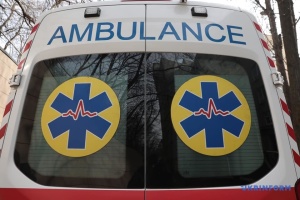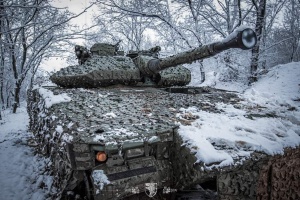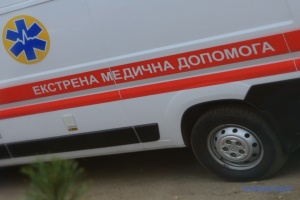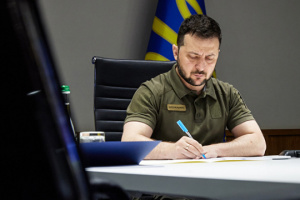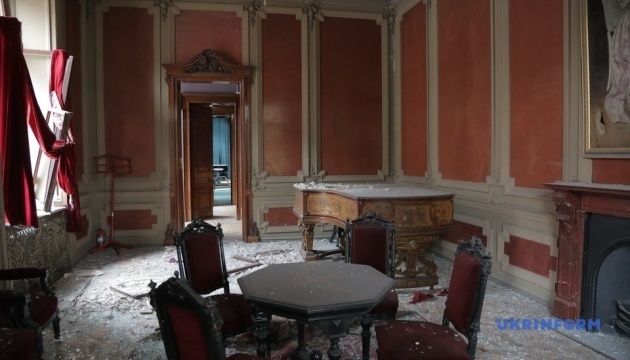
Missile attack on downtown Odesa: Russia destroys historical heritage
On the night of July 23, the Russian army hit the very heart of Odesa with missiles. The Transfiguration Cathedral, the House of Scientists, five kindergartens, four schools and many residential buildings, all of which are under UNESCO protection, were seriously damaged.
The city’s downtown streets turned into a carpet of shattered walls and glass. Following the night attack, 22 victims were taken to in Odesa hospitals, including 3 teenagers (12 and two 17 years old). One person was killed.
Ukrinform correspondents visited the areas hit by missiles and saw with their own eyes the aftermath of the terrorist country’s barbaric actions.

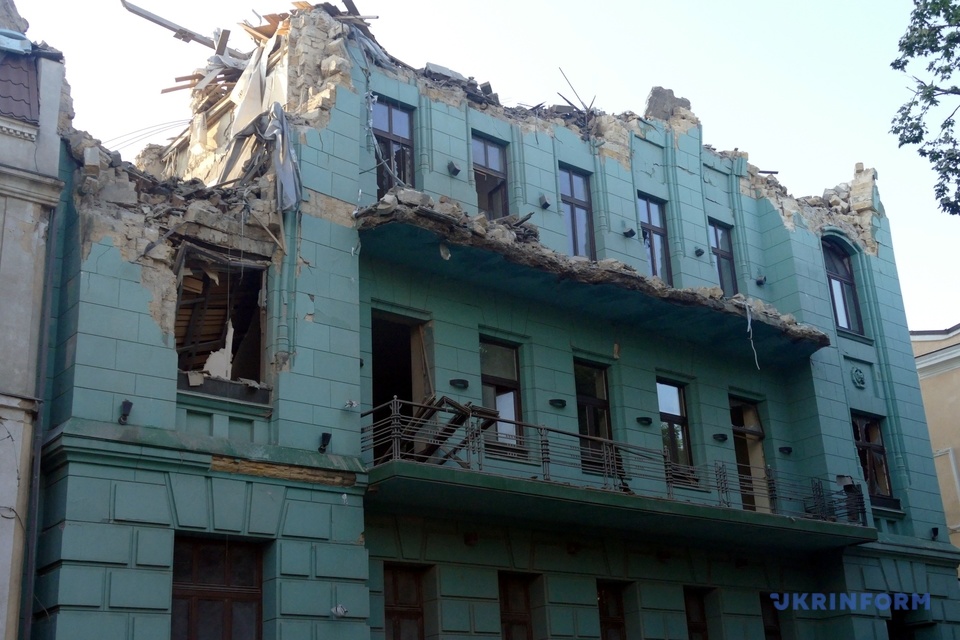
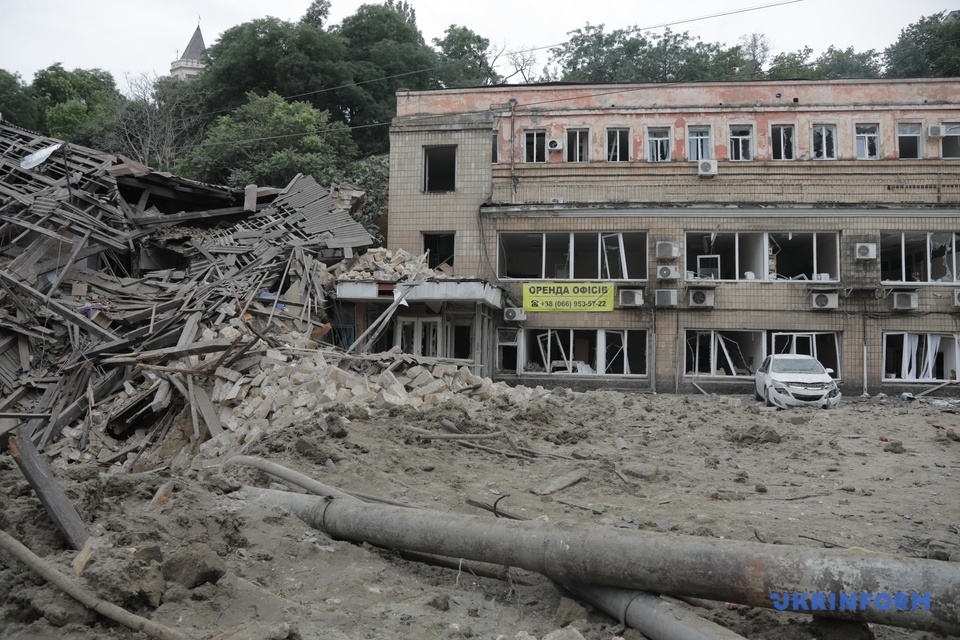
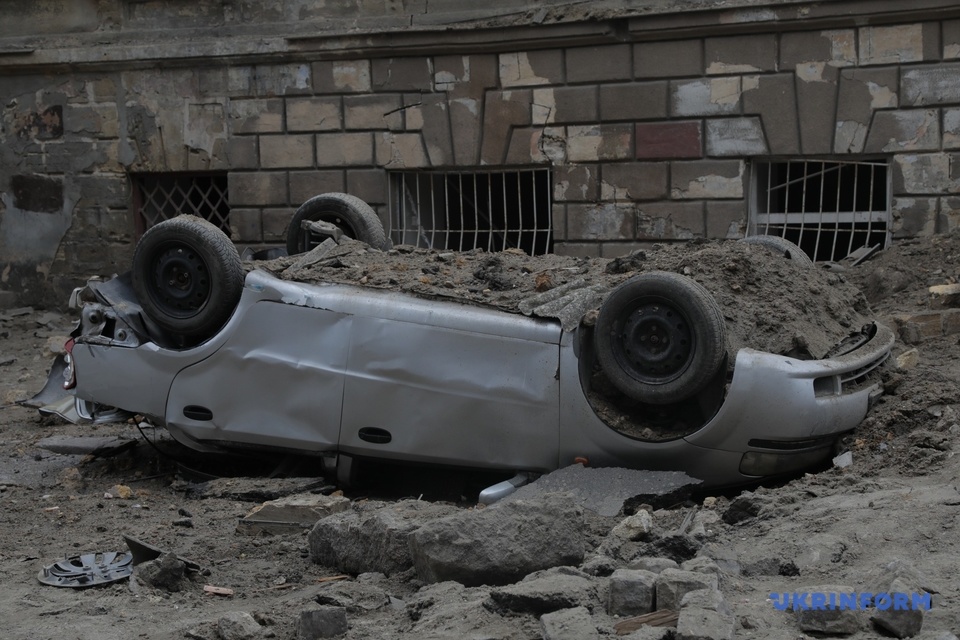
The invaders claim that, during the night, they attacked “facilities where terrorist acts against the Russian Federation were being prepared.” In fact, ordinary people who had nothing to do with military affairs once again became victims of the aggressor state. More than 40 buildings in the city’s downtown were damaged on Preobrazhenska Street, Polskyi Uzviz, Viiskovyi Uzviz, Zhvanetskyi Boulevard, etc.
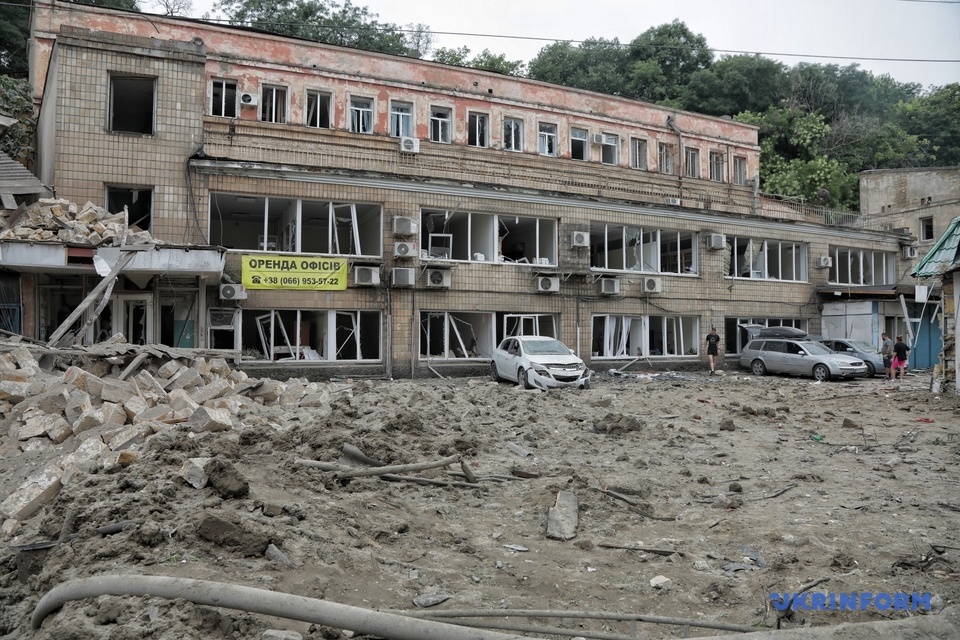
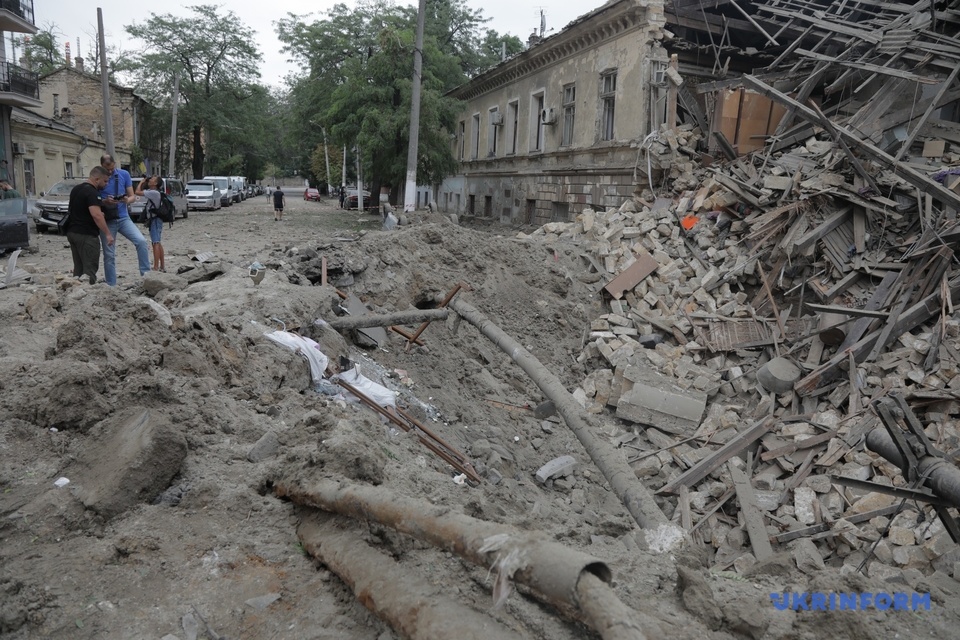
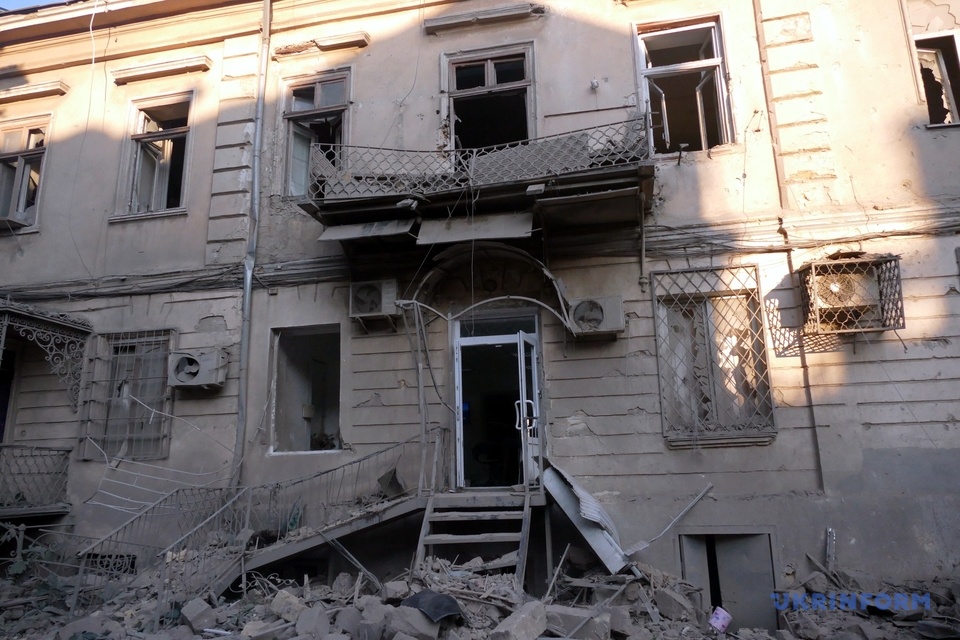
“This was not the way we would like to wake up. Our apartment is damaged by about 15 percent. But there are other apartments in the building that suffered much more damage. As for my car, you can see that there is nothing left of it. The main thing is that my wife and I are alive. And we can buy a new car. Life is troublesome,” says Oleksiy, a resident of a house on Polskyi Uzviz.
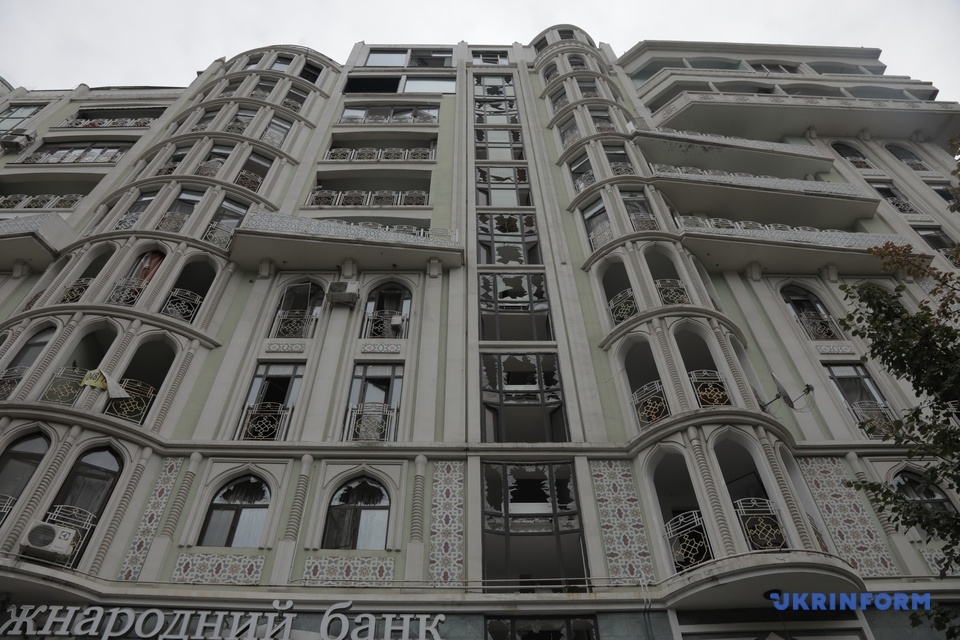
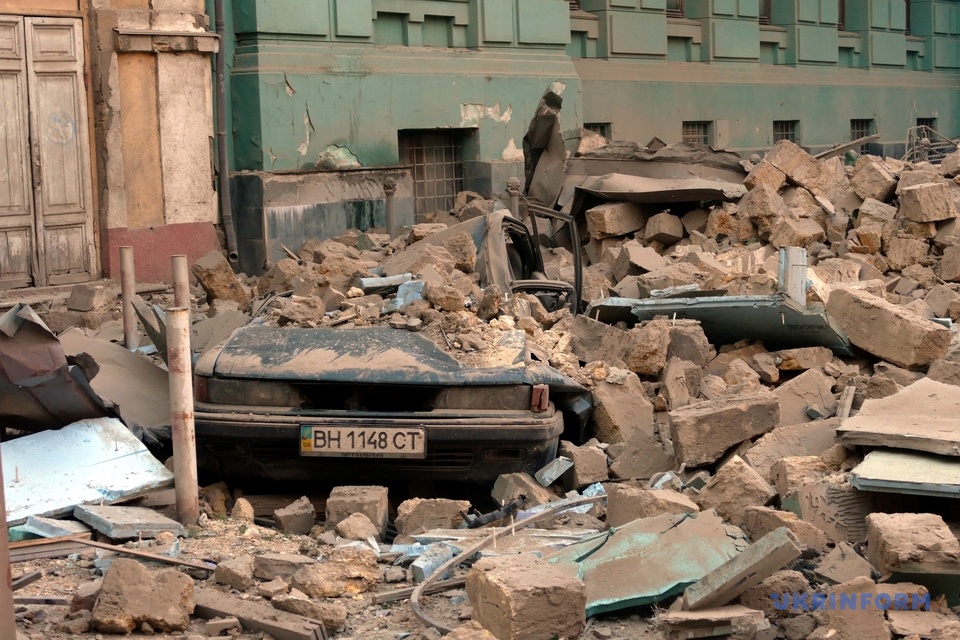

Down the street we see a huge crater. The facade of the building next to it was damaged: windows were smashed, balconies and walls in some apartments were destroyed. People are in a state of shock, there is almost no one willing to talk about the night attack. Everyone is busy with something. Some are helping to remove glass from the asphalt, some are taking things out of the most damaged apartments, some are already stretching plastic sheeting over empty window openings, while others are just standing nearby with their heads in their hands, trying to realize what has happened.
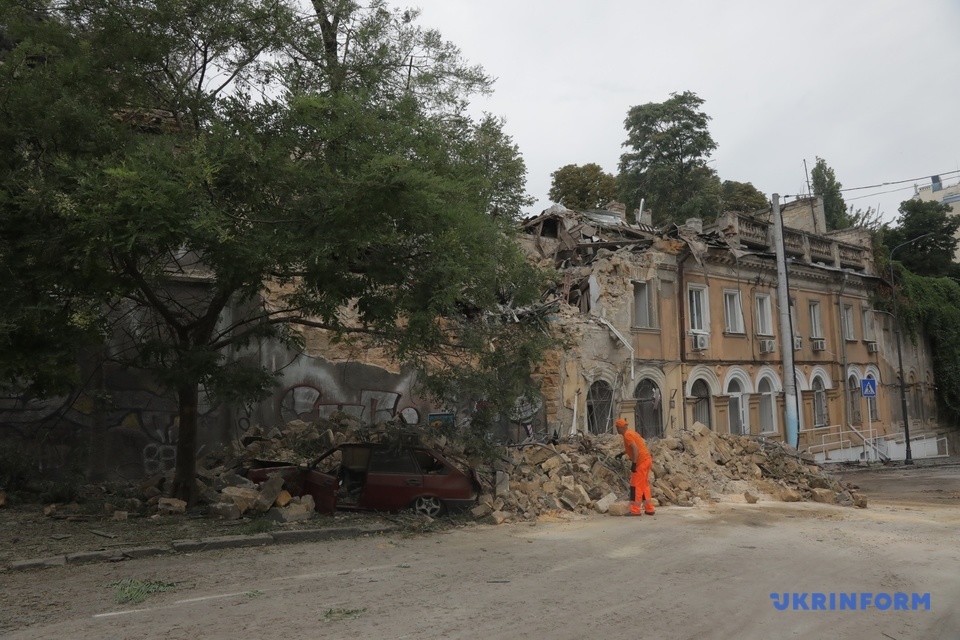
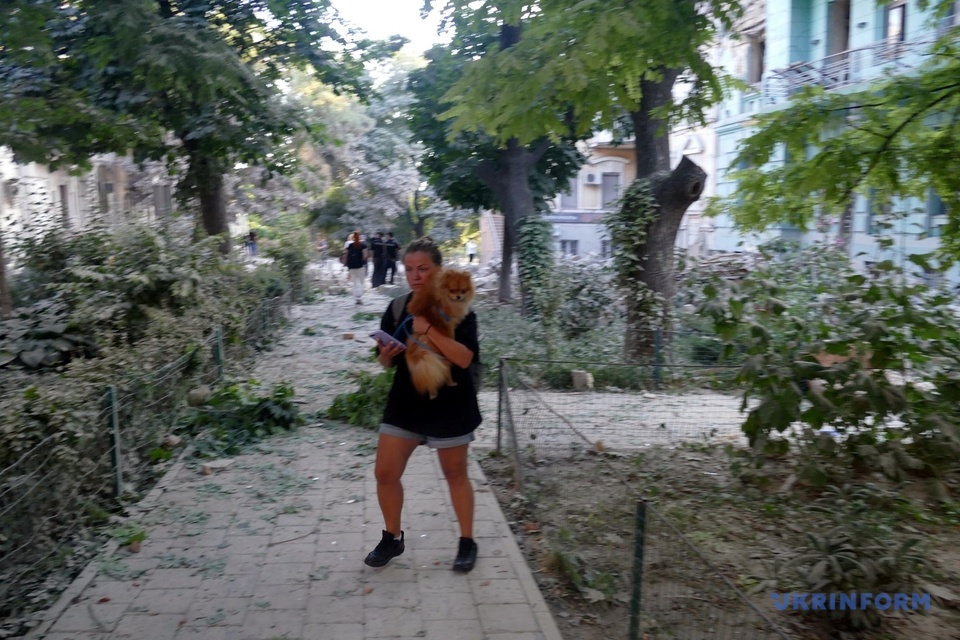
“Morally, it is very difficult. Yesterday there was a clothing studio here, and today it’s a ruin. We’re holding on…,” Oksana, a clothing studio employee, told us briefly.

The roof at 6 Preobrazhenska Street was partially torn off. Residents of the top floor can now see the sky through their ceiling.
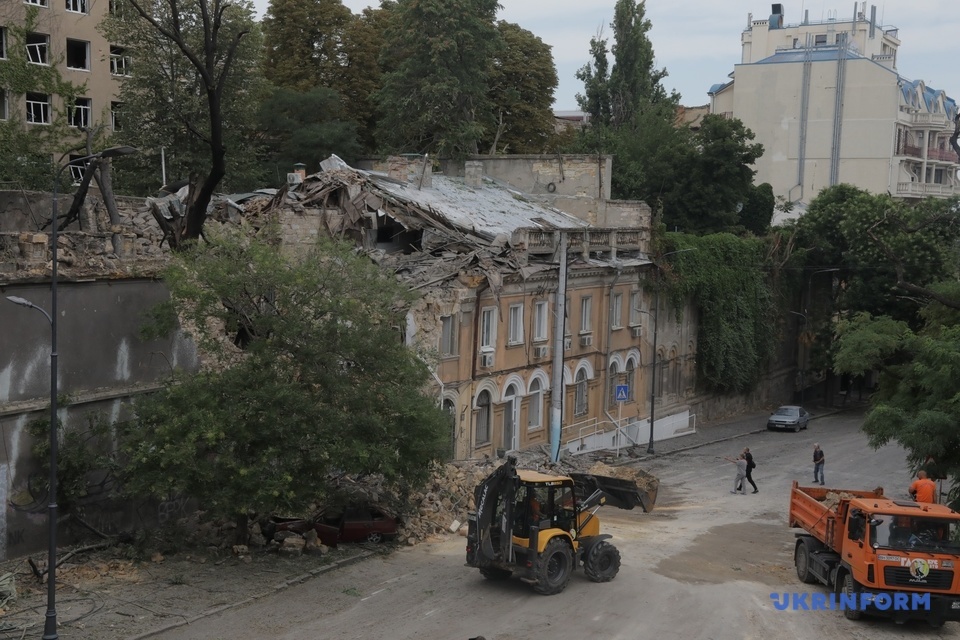
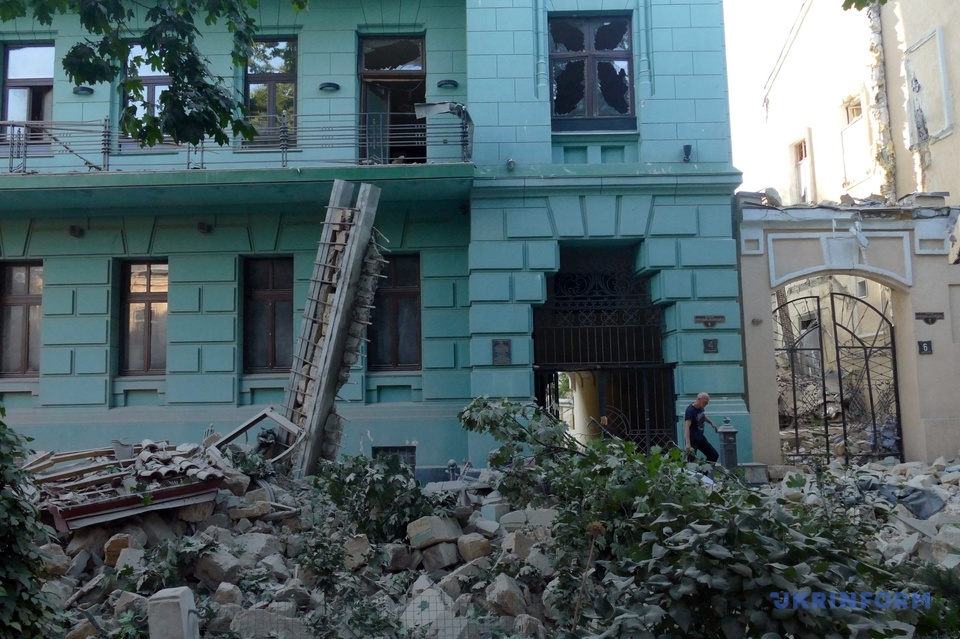
“Inside, the apartment looks fine… But there is no roof. It’s hard to imagine what it will look like after the first rain. And I don’t know what to do about it. At least my daughter was lucky enough not to see this horror — she slept at her friend’s place. And there’s no way to describe how scared my wife and mother-in-law were!” says Andriy, the owner of the damaged apartment.
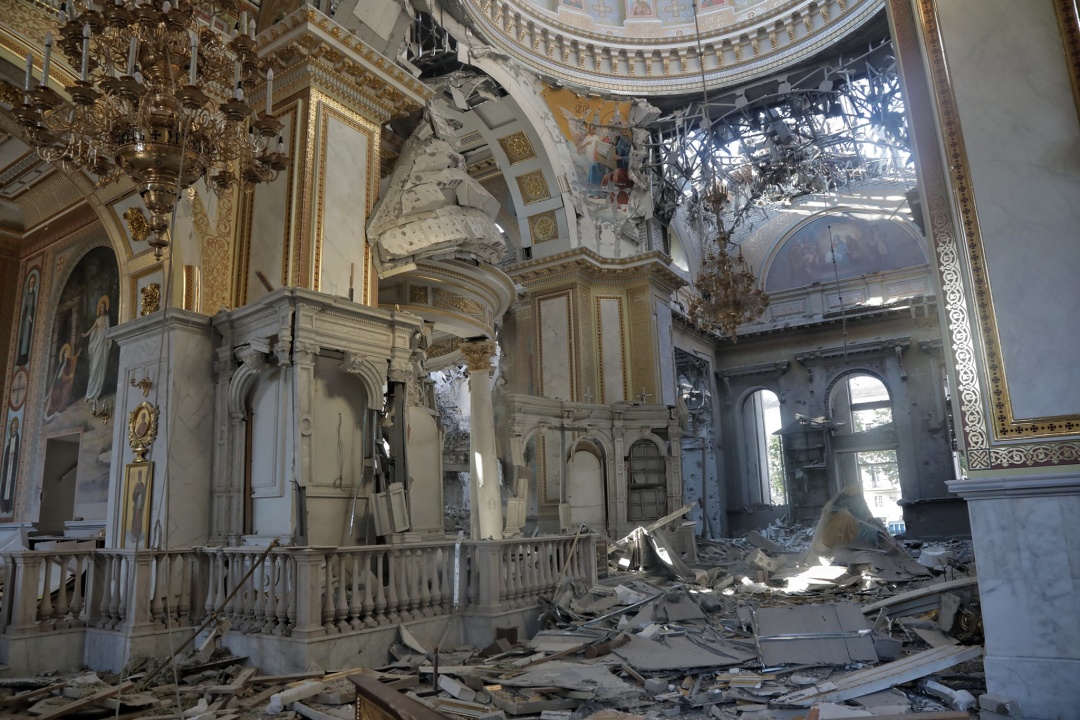
The Transfiguration Cathedral is two blocks away from Andriy’s house. Or, more precisely, what is left of the Cathedral. Father Mykhail was in the Cathedral at the time of the shelling, as he was supposed to hold a service in the morning. He was not hurt. The missile hit the right side of the Cathedral, piercing it all the way through to the minus ground floor. Rescuers and clergymen managed to save a number of icons, including the Kasperova Icon of the Mother of God who is regarded as the patron saint of Odesa. The Iveron Icon, painted for the occasion of the 100th anniversary of Odesa, also survived.
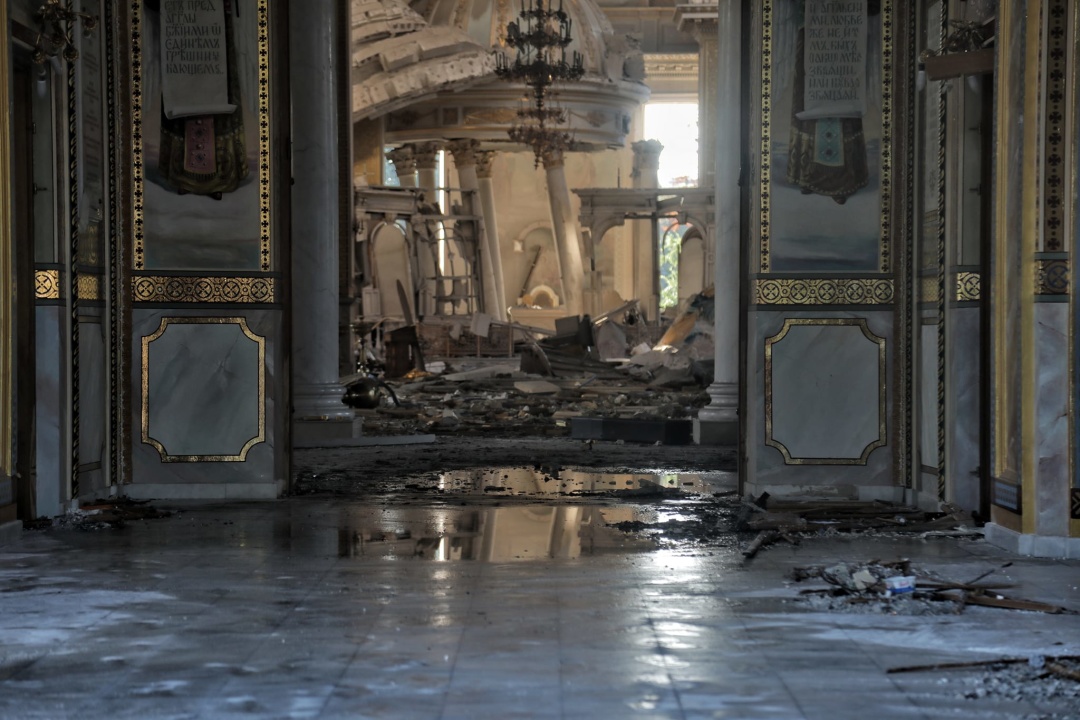
“The destruction is colossal. Half of the Cathedral was left without a roof. The central pile and foundation were damaged, all the windows were smashed, and the stucco molding was knocked off. After the hit, a fire broke out in the church shop,” Archdeacon Andriy Palchuktold reporters.
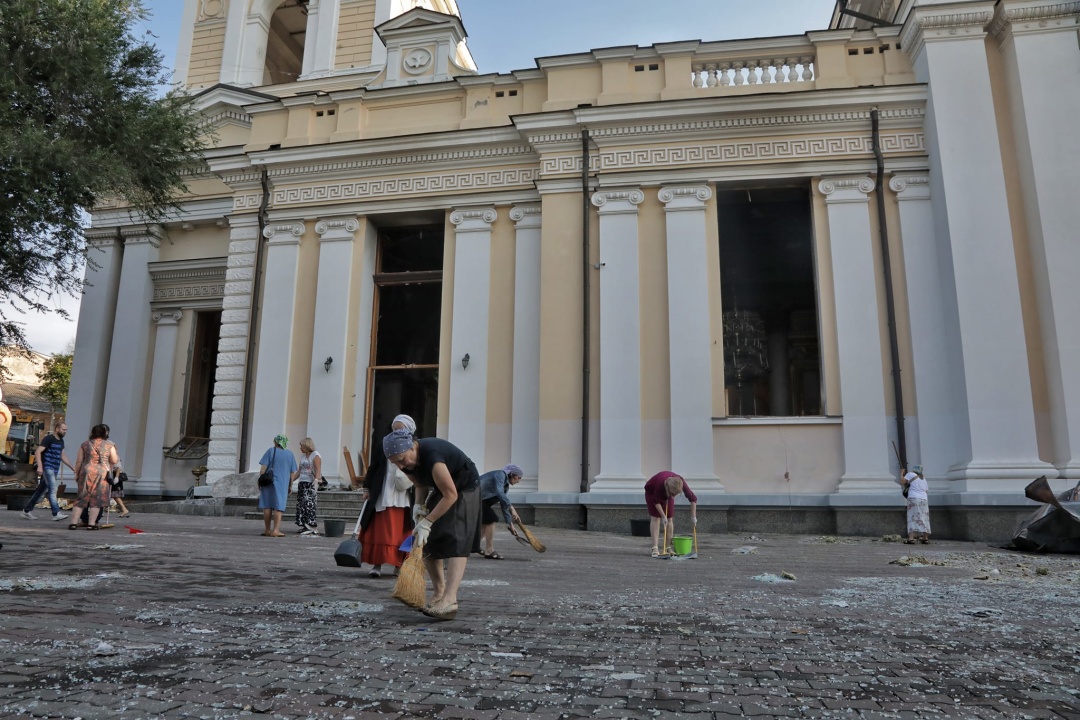
Currently, priests and Odesites are praying for peace in the open air near the damaged Cathedral building.
According to the Odesa City Council, 22 people sought medical care following the missile attack. Seven of them stayed in the hospitals, while the rest of the patients will continue their treatment on an outpatient basis.
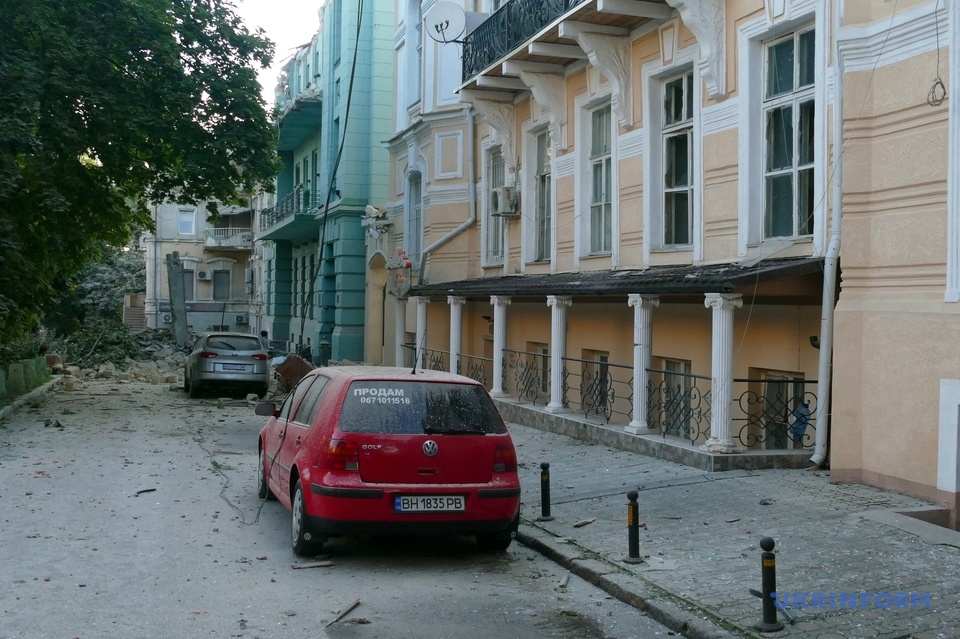
“Most of the injuries were caused by glass shards. One patient had a piece of metal removed by doctors from his body. Seven victims of the Russian aggression hospitalized, including a 17-year-old boy in grave condition with a penetrating chest wound,” the municipality said.
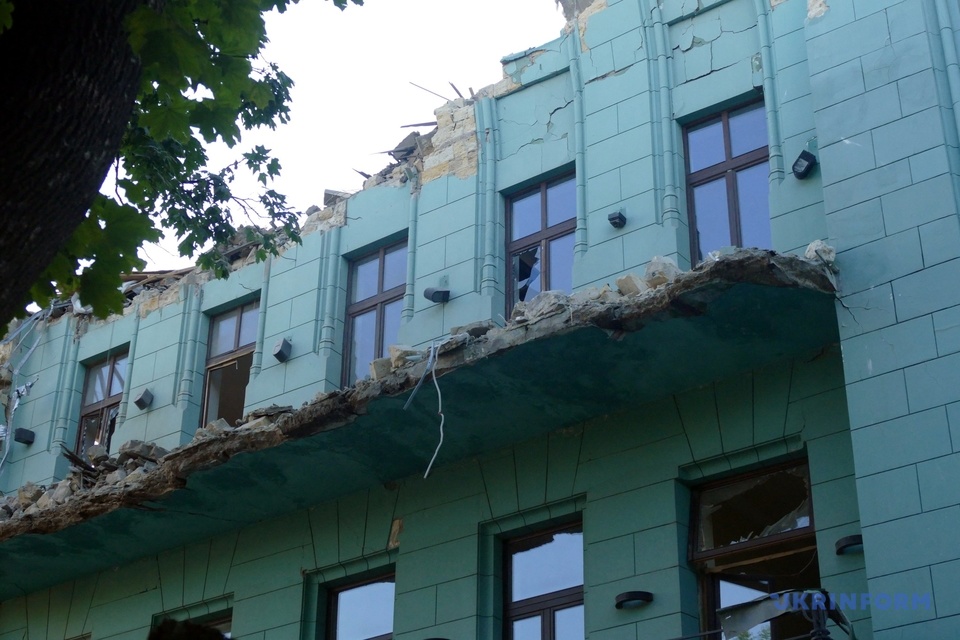
We talked to a woman with a lacerated wound to her arm — she was hit by glass shards on the stairs of the house. Ms. Yevheniia was trying to help her neighbours who were stuck in the elevator during the missile shelling.
“I couldn’t make it to the shelter. A blast wave followed the first explosions, the power went out, and people got stuck in the elevator. I ran to fetch the key to open the elevator doors, but it was stuck between floors. Another blast happened at that moment, and I was hit by flying glass. Luckily, I’m alive. It could have been worse,” said Yevheniia, a resident of a house on Viiskovyi Uzviz.
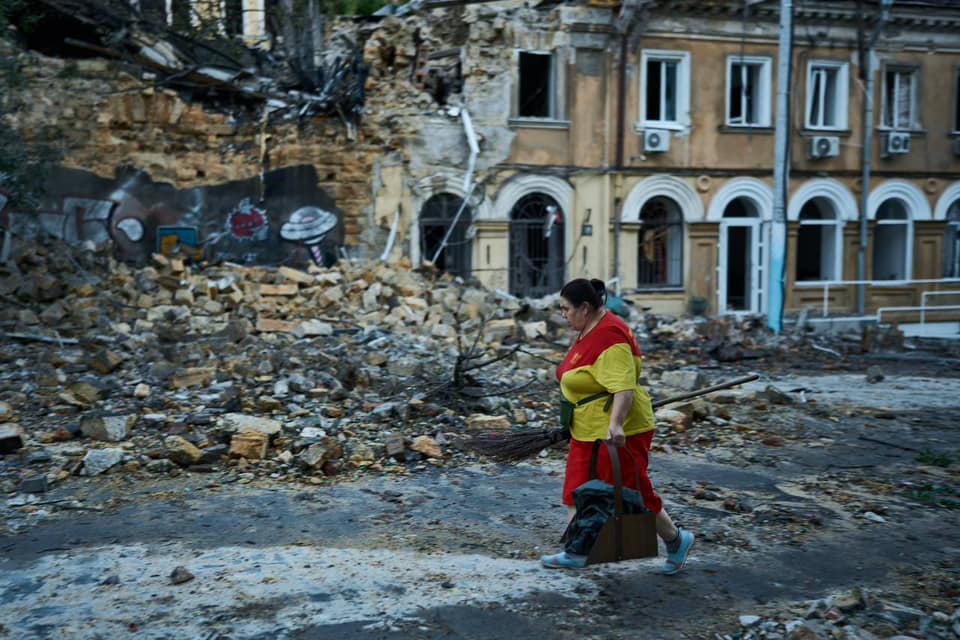
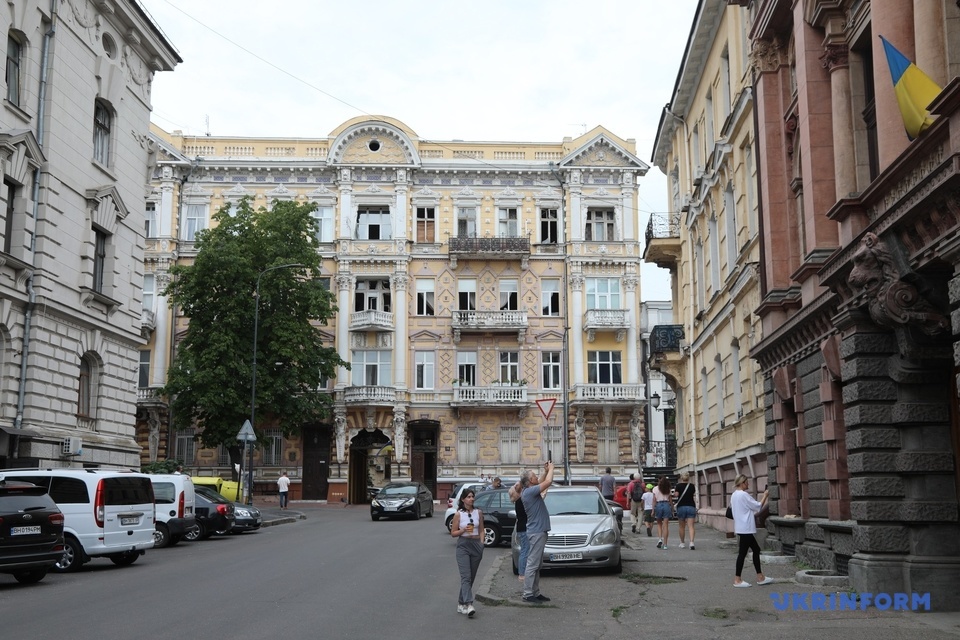
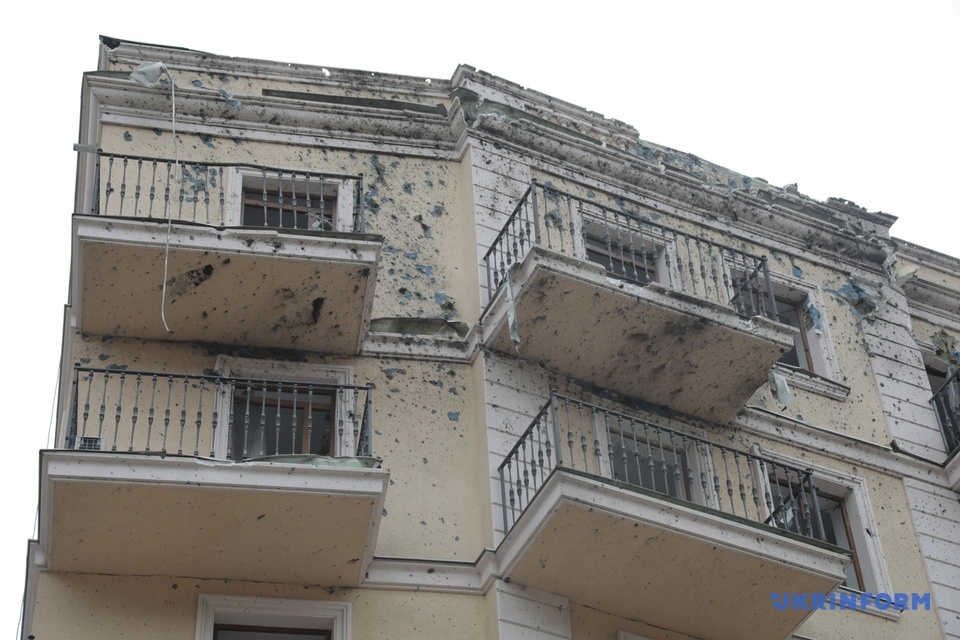
Apart from residential property, four schools and five kindergartens sustained damage. At least 25 listed buildings were also damaged. These include the 19th-20th century houses, such as Chyzhevych House, Papudova House, Zabludovskyi House, Haharin House, Yanush House, Russell del Turco House, Mas House, Manuk Bey’s Mansion, etc.
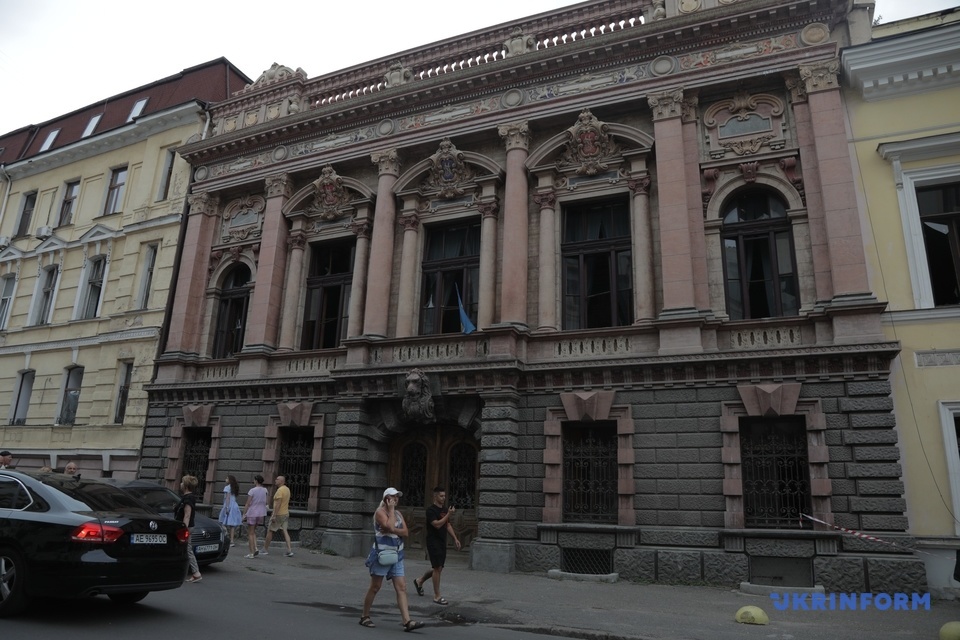
The House of Scientists (Count Tolstoy’s Palace) also suffered significant damage.

Its windows were smashed, with partial destruction to the walls, collapse of the ceiling, and broken furniture. Before the war, it was perhaps the most favourite location for newlyweds’ photo shoots. The palace’s halls had also hosted various cultural events.
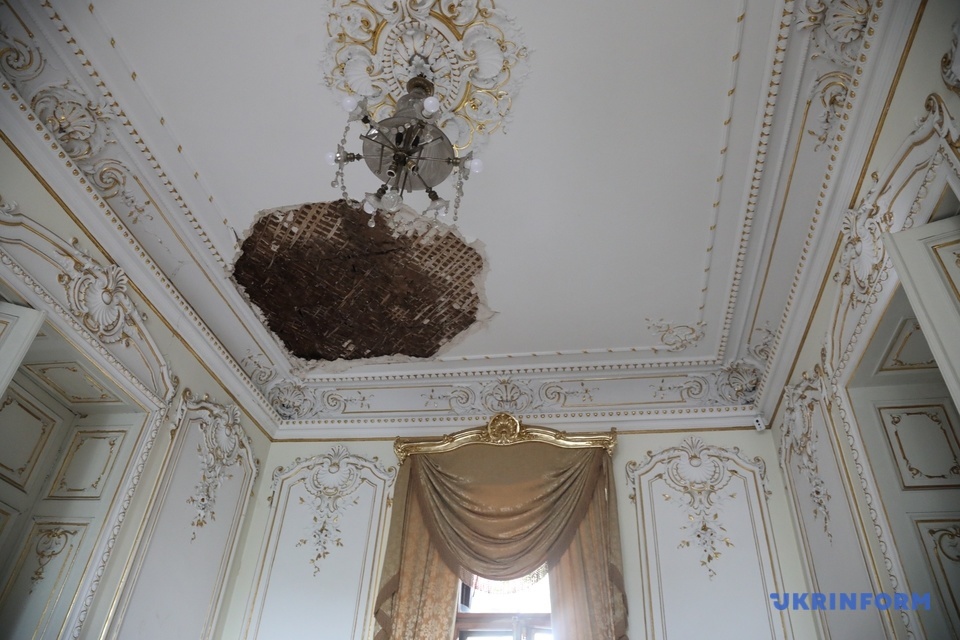
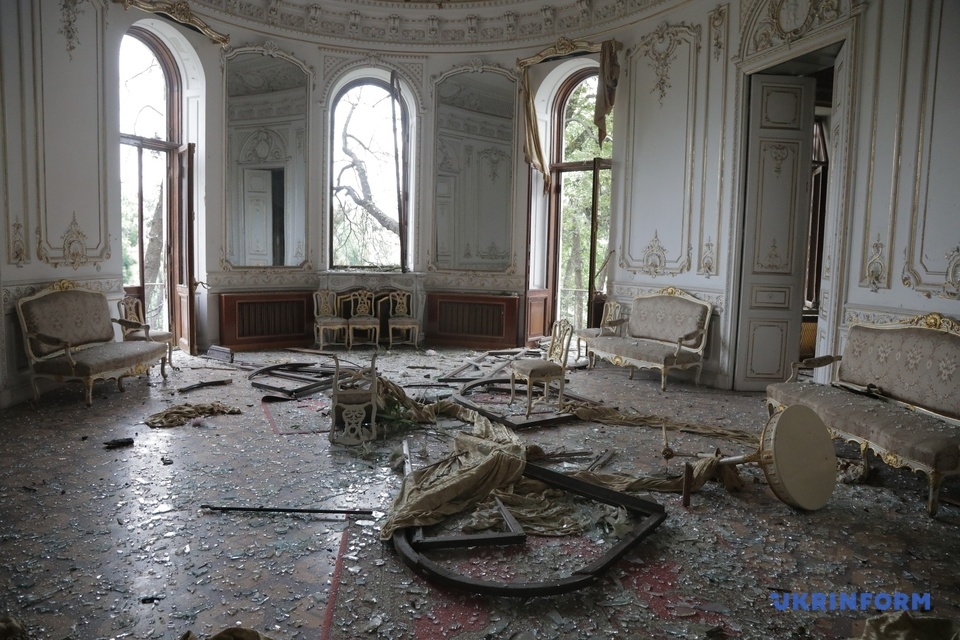
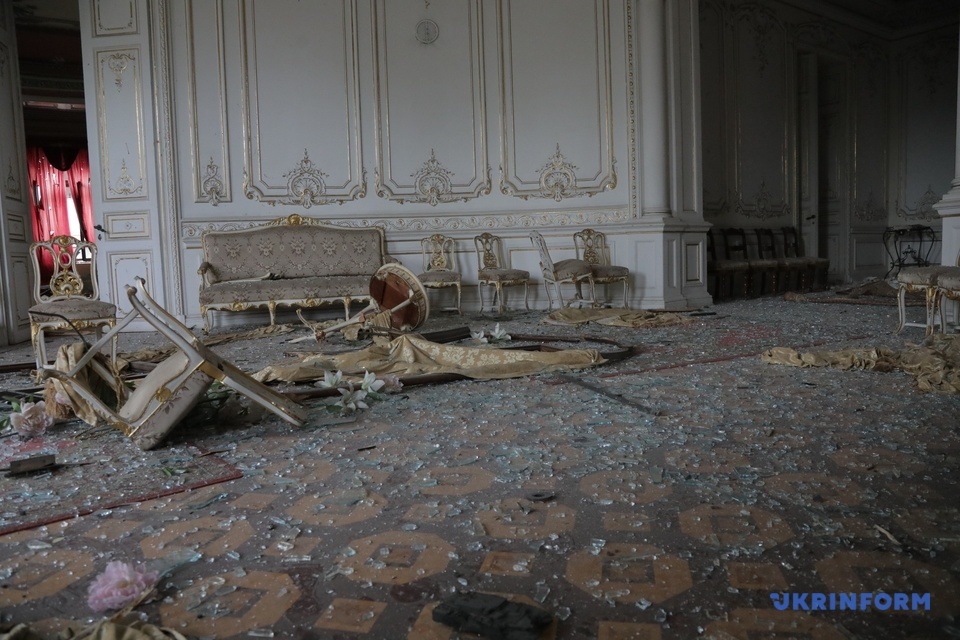
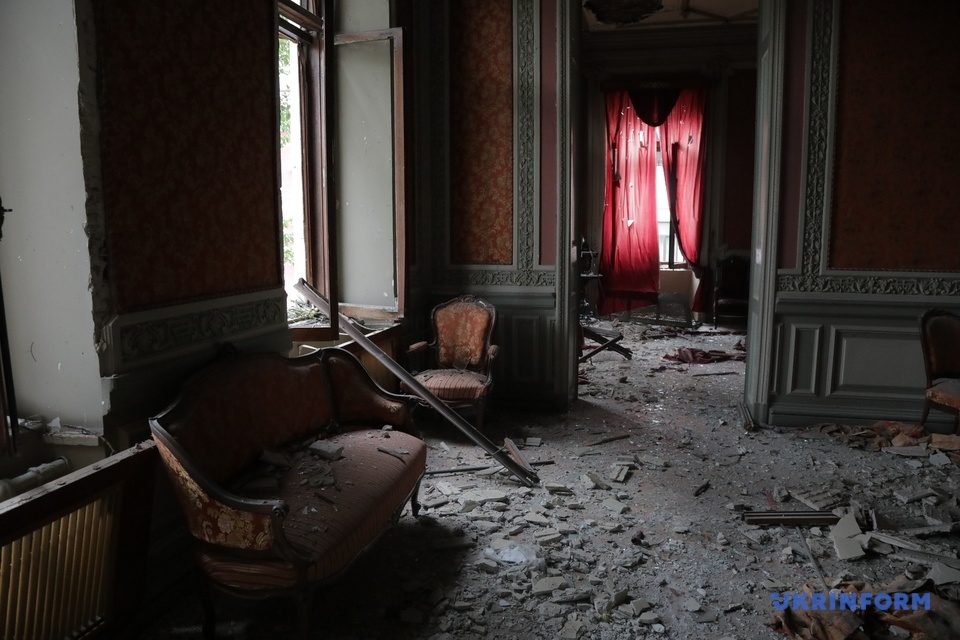
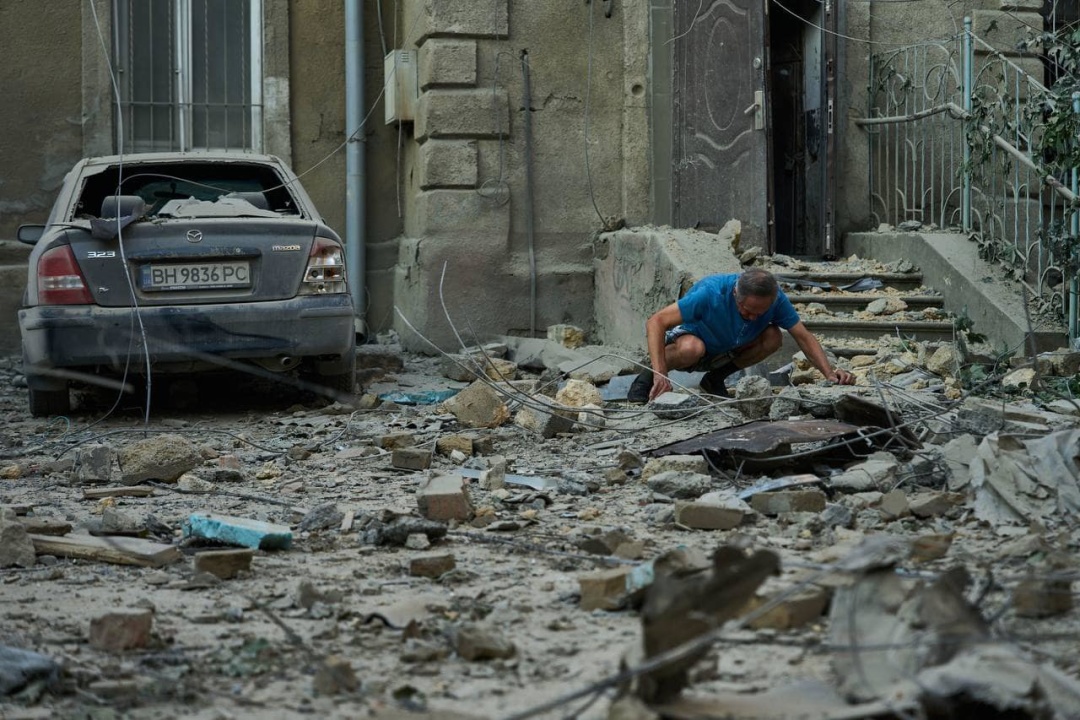
The building was designed by Francesco Boffo and erected in 1832. This architectural complex comprises two buildings — the 12-room Count Tolstoy’s mansion and the art gallery building attached to it in 1896–1899. Back in Soviet times, the building’s interiors served as Louvre chambers during the production of the D’Artagnan and the Three Musketeers TV series.
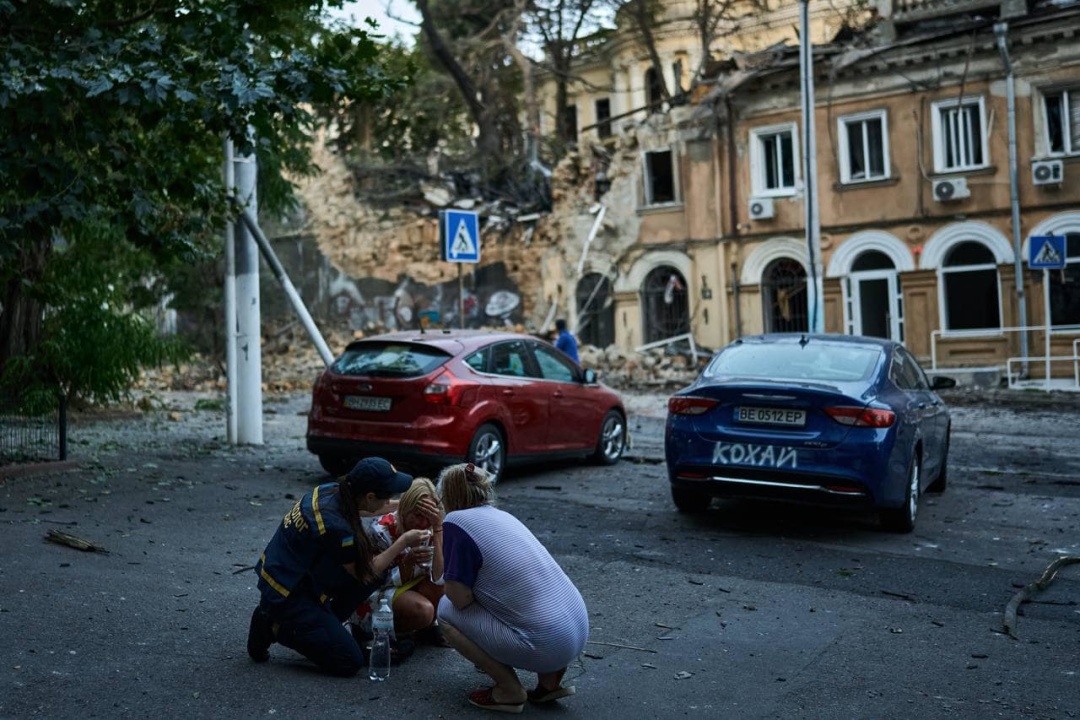
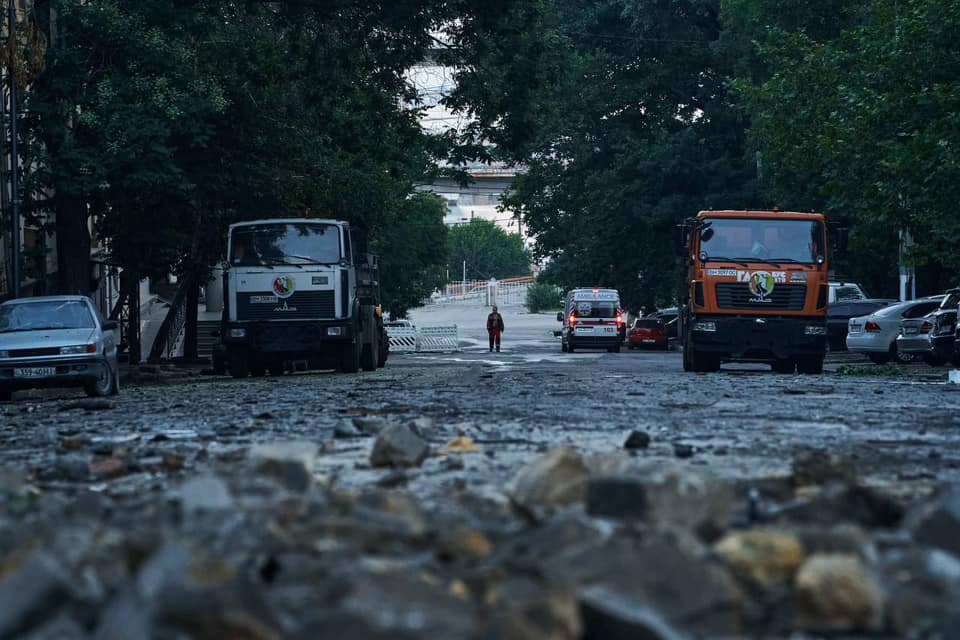
This most cynical crime committed by the Rascists has rallied Odesites: despite their difficult emotional state, people came to the Transfiguration Cathedral and other places of destruction to remove the debris, help rescuers and utility workers. Besides, Russia’s barbaric attack has dealt a final blow to the myth that “Putin loves Odesa and protects it”, which was previously disseminated by enemy propagandists. Russian Nazis want to kill all Ukrainians, regardless of where they live. Cultural heritage, meanwhile, is an empty phrase for the enemy.
Hanna Bodrova
Photos by Nina Liashonok, Ihor Tkachenko, Kostiantyn Liberov

